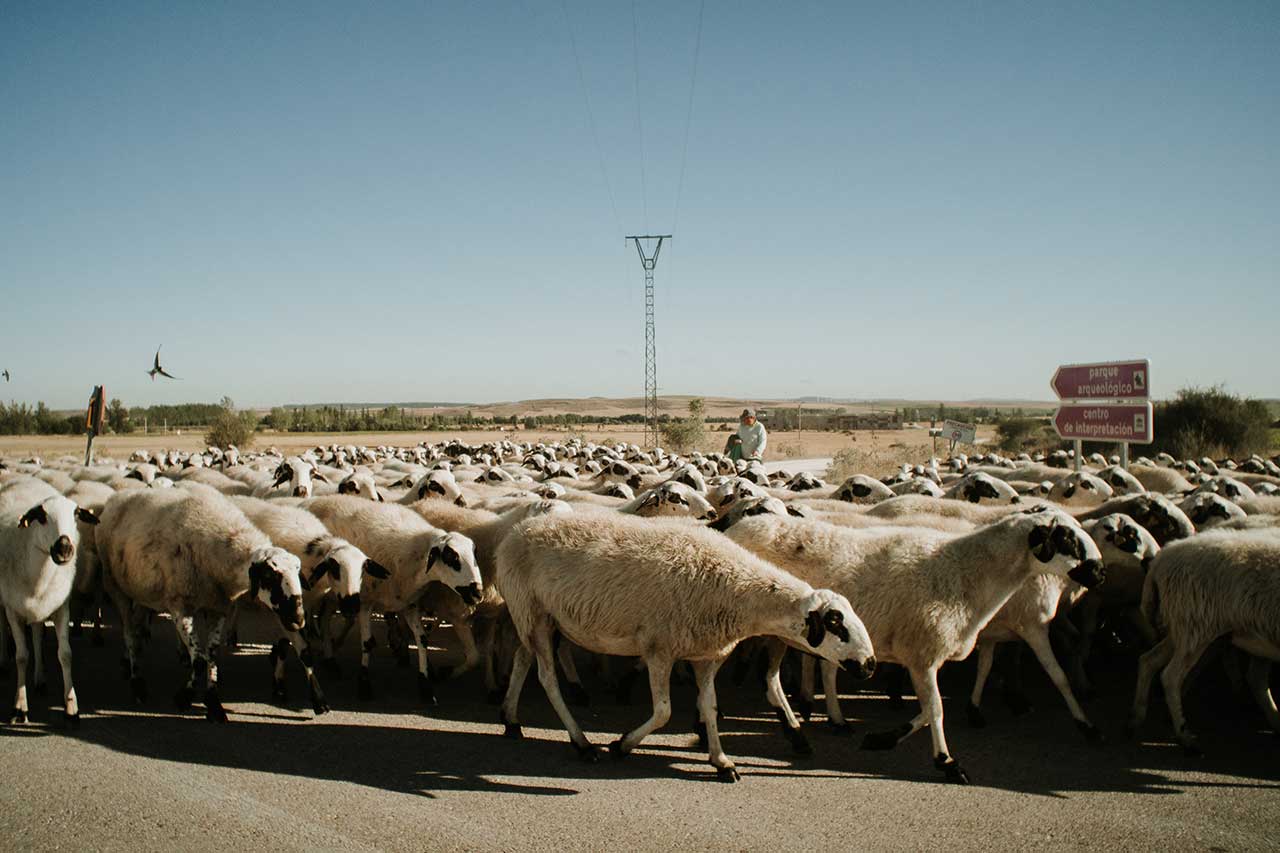LETTER
I’m looking for an answer to 6 queries concerning fruit, wine, tea, stevia, and yoghurt
Excuse me if I write to you. I understand that you receive too many e-mails and that people should not run after you and make life difficult for you. However, sometimes it is important to solve budding uncertainties. I have bought your book and am reading it. I had some doubts and some questions which might be of general interest. I would hence like to know what you think about 6 issues listed here:
- Some fruits are particularly rich in polyamines (oranges, bananas, kiwi fruits). It seems that polyamines aid cellular growth. For whoever had a tumor in a developing stage without being aware of it, the abundant intake of these fruits might aid tumor development, instead of fighting it.
- Dr De Petris recommends a maximum of 2-3 pieces of fruit a day.
- All experts say that half a glass of wine at meals is beneficial. Is it true? Or is it beneficial only for those who produce and market it? Or is it neither beneficial nor detrimental, as long as it is only half a glass and hence I can drink it in this amount without any concerns?
- The properties of green tea are continuously praised, but both you and others ban any type of stimulants. So is green tea beneficial or detrimental? Is it a matter of amount also in this case?
- As far as sweeteners are concerned, what do you think of powdered stevia? Is it better to use dried, fresh leaves? I know that we should get accustomed not to sweeten at all, but sometimes one feels the need for it (for example in a herbal tea). In the adaptation and change-over phase from sugar to no sugar it might be useful.
- Yoghurt is a live substance if home-made and renewed every week. Is it as detrimental as dairy products in general even in this case? Do the advertised positive properties (gut flora, etc.) compensate the negative ones, especially if one does not consume other dairy products in addition to yoghurt?
Thank you for your answer, if possible to my private e-mail address as well as publicly. Best regards. Pietro Mugnaini, from Castelfiorentino-Florence
REPLY
Not 2, but at least 20 pieces of fruit a day
I publicly expressed my esteem for Dr De Petris two years ago, for an excellent article of hers on phytonutrients and on natural colours, and I am surprised that now she maintains the idea that 3 pieces of fruit a day are sufficient for keeping in full health. Honestly, I can’t understand what has happened to her.
Sometimes one should be more steadfast and consistent, and not get carried away by the crazy nonsense which can be read everywhere. 3 are not sufficient, and even less sufficient are 2. At least 10 or 20 are required, and even better if they are 30. What does 2-3 pieces of fruit a day mean, if not remaining in the mud and in the quicksands of the flicking animal proteins? This is not science, and even less so is it vegetarian science, but rather outright terrorism.
“Aoh, parla come magni” (“Hello-oh, speak as you eat”, Translator’s note) do they say in Rome
This morning for breakfast I’ve had 6 oranges and 2 kiwi fruits, halfway through the morning I’ve had 2 clementines and one banana, for lunch 2 tomatoes in a salad, at the end of my lunch 7 walnuts and 10 hazelnuts, halfway through the afternoon 3 clementines, 2 kiwi fruits and one slice of pineapple, for supper I’m going to have 5 dates plus the usual apple, and figures speak clearly.
If we were at the end of May, the bill would increase, with cherries, strawberries, raspberries, early peaches and apricots galore. If I was in Asia, among blueberries and gooseberries, among longans and lychees, among mangos and papayas, among durians and jack-fruits, the figures would not decrease at all.
Food terrorism against natural products is part of the game
A terrorism comparable to that perpetrated by corrupt dentists, such as Dr. Bass, who has launched in the world the crack-brained idea that oranges acidify and cause teeth to fall, sensational bullshit which is completely absurd, but which continues to have its effect, like the well-known coffee advertisement “Più lo mandi giù e più ti tira su” (“The more you gulp it down, the more it picks you up”, Translator’s note). If one doesn’t frighten and swindle, one can’t sell their muck.
Twopenny people, low in every sense, such as Bass, are abundant in every corner of the planet. They can be bought with a few dollar bills, instead of with the thousands of Euro required for television commercials. Oranges are the symbol of fruit, especially in the wintertime, and they seriously bother drugs and meat-dairy food multinationals. By hitting oranges, veganism, hygienism and crudism are hit. Three targets with a single stone.
Carnival theories which the population believes in. You frighten them in the morning by yelling about poisoned fruit, and by the afternoon nobody buys fruit.
Polyamines weakly stimulate tissue growth? This may be true. According to some, however, they allegedly aid the development of tumor cells. And this is terrible nonsense. We should first believe in the lie of tumoral cells, while it is being revealed that tumoral cells do not even exist, but they are only normal cells which are purely and simply overabundant.
And we should also believe that polyamines cause cancer cells to grow even before a mutation from normal cells to cancer cells has even taken place. And we should also believe in the active intervention of resuscitated viruses, which for any true scientist are pieces of dead cells, calcified and devoid of any effect, but that of clogging where poor metabolic cleanliness reigns.
Do they also talk of nitrosamines? Doubly ridicolous.
Do they pull out nitrosamines? But are we going bananas? We are talking not of Bologna sausage and ham, loaded with deadly nitrites and salt-soaked cadaverines, but of fruits packed with antioxidants, vitamin C, as well as captured and ready-to-use solar energy. Do they realize they are becoming ridiculous or not? A minimum of intelligence is required even for telling lies! Moreover, our fuel is that one, so one cannot easily do away with fruit.
Live fruit, full of force, of positive vibrations and radiation
We are talking of live and vital fruit which does not alter blood leukocytes and which develops 10,000 Angstrom on the Simoneton scale of electromagnetic vibrations. We are talking of fruit which produces bright radiations from red to ultrared in the colour spectrum, those same colours which Dr. De Petris praised in her cited article. Measuring out fruit means dangerously starving the system, it means creating a calorie deficit. I certainly do not want to involve Dr De Petris in these shady manoeuvres, and I also accept that everybody is entitled to think as it pleases him/her. But the ones teaching nutrition must take their own responsibility. They must explain, for example, how to remain in good health in the long term without exceeding those daily 20-30 grams of proteins, which mark the border to the forbidden area of acidification.
The compensation with putrefied, salted and sweetened material
In any case, hunger must be compensated for. Eating 2 pieces of fruit a day means that bloody sandwiches loaded with slaughtered junk, with Bologna sausage and ham are needed, and egg and chocolate packaged cakes are also needed, as well as spreads, jams, biscuits and Nutella-type spreads. A food that stays well below the vital minimum of 6,500 Angstrom, on the electromagnetic scale.
A substance with irradiates colours from grey to X-rays, staying in the forbidden zone, in the area of robber-foods, in the area of disease-producing and cancer-causing foods. A material which multiplies leukocytes from the standard 6,500 per cmm of pre-meal blood to the pathological 20,000 of post-meal blood, as proven by Paul Kouchakoff’s experiments.
Polyamines are the latest invention, after eme-iron, B12 and Omega3 fatty acids
Talking of polyamines in an anti-fruit function is but the latest insane idea of food terrorism. Multinational companies do not give up, and continuously dig new holes and set new traps to make the vegan path difficult and tricky, but they regularly fail.
They (the FDA) have tried with heme iron, but anaemic people forcefully carried to drink warm, gushing blood, under the stabbed animal, worsened after three days, instead of being cured, while the wretched souls who had believed in the 300 grams of noble proteins a day made it to the terminal wards and to the cemetery long and painfully before their time.
They (the FDA) have tried with vitamin B12, manipulating the figures and bringing the WHO’s minimum limits from 80 to 157 pg/mL, undervaluing B9 (folic acid), which in vegans remains high and compensating, and undervaluing vitamin C, while vegans are in excellent and radiant health with as little as 100 pg/mL cobalamin.
They (the FDA) have tried with Omega3 fatty acids from fish, presented as the only source of vitamin F, and it has then been noticed that almonds and pine nuts have 10 times more Omega3 fatty acids and more vitamin F than fish, as well as healthy, raw prostaglandins devoid of the side effects of fish.
The problem of treated fruit and of organic fruit
And, with this, I hope I have answered the first query. Concerning fruit quality, no doubt that the best one is the wild variety, or even the one that grows in your orchard, free from chemical fertilisers, pesticides and GMOs. There is no doubt that a number of fruits exist which undergo no treatment whatsoever, such as kaki, kiwi fruits, figs, standard plums, standard cherries, pomegranates, coconuts, walnuts, almonds, blueberries, and others instead which are super-sprayed, such as strawberries, grapes and peaches. No doubts that there are healthy fruits which are effectively protected by an excellent skin, such as pineapples and bananas. It will only suffice to choose the most suitable fruits using the common sense criterium.
A piece of fruit, even not an organic one, remains a valuable product
However, between having treated fruit and having no fruit, I’d rather take home nice trays full of ranges, clementines and apples which scent my home filling it with natural fragrances and colours. At the end of the day, a fruit remains a natural product which grows to the wise and slow rythm of nature, evolving for months and months in combination with air, rain and sunlight.
There is no comparison between the bright vividness of the worst fruit and the funereal profanation of the best meat
I am clearly against pesticides, chemical products, and again GMOs in any shape and colour. However, I find the variety of messages concerning polluted fruit unsuitable and hypocritical, aimed at devaluing fruit on the whole in general, steering the consumer towards the dead, superstore foods made of plastic materials. Assuming that even non-organic fruit is polluted and implies some sort of damage, meat – be it organic or non-organic – is 100 times more polluted and is 100 times more harmful.
Lights and shadows of wine, a fermented and alcoholic beverage, a sworn enemy of the liver
Wine, especially at a meal, brings happiness and endorphins, it brings sociability and a propensity towards joking, but it is harmful to the body, in the sense that it interferes with digestion. As a matter of fact, it prematurely pushes the bolus downwards. This does not mean digesting-assimilating, but only expelling before its due time, without counting the insults and swearwords by one’s own liver, which doesn’t want to know a thing about alcohol. Wine is like coffee. It is beneficial in the short term and is extremely harmful in the long term. The less wine one drinks, the better it is. If one loves wine, he should drink it measured out of a spirits glass, and not out of a wine glass, and he should do so away from meals. If people learnt to eat more grapes and to drink unfermented grape juice instead of wine, there would be fewer taverns, but also fewer chemist stores.
There are experts and experts
The best thing is not to put glasses when setting the table. Healthy eating does not need to be coached down with liquid substances called beverages. Do experts say the opposite? One must see what experts are being talked about. For wine tasters, living without wine would be a contradiction, if not hell on earth. But it is possible to live without wine. And you do it rather well, too.
The compensation with junk food
As far as hot drinks are concerned, I’m opposed to any type of tea and coffee, and also to herbal teas (except in case of temporary and therapeutic use). We need to maximize the intake of our elective fuel, which is fruit. Any useless drink, any useless food, in addition to the damage made per se, causes a second, serious damage, which is that of subtracting space to fruit. It is of course clear that if one eats only two or three pieces of fruit a day, he or she must necessarily compensate with beverages, packaged fruit juices, wine and beer, tea, coffee, colas and all the rest, i.e. with junk food and abominable drinks.
Stevia is an excellent sugary plant
Stevia is an excellent plant. A small, fresh leaf in your mouth keeps you company for several minutes. However, sweetening foods is not necessary. I am not familiar with the industrial processes which turn stevia into a powder state. I believe that, in any case, dried leaves are the best solution.
Yogurt, a lot of business, a lot of animal exploitation and no health benefits
There is no milk in the world which is good for a grown-up human. Yogurt from milk furthermore carries all the health and ethical issues of milk itself. The gut flora regenerates in other ways, certainly not by bacterial transfer or replacement.
Valdo Vaccaro
(English translation by Jessica Boveri)




Commenti
0 commenti